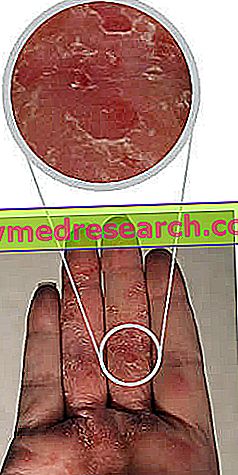Origins and diffusion
The frankfurter is a meat FILLED food; it represents the central-European alter ego of Italian sausages, so much so that the literary translation of the term "würstel" means "salsicciotto".

Preparation
Traditionally, frankfurter is a sausage obtained from grinding pork and / or beef; based on the local recipe and the type of sausage, the ingredients (percentages of meat), the shapes, the weights, the external casing, the method of preservation etc., the various preparations are significantly different from each other.
Roughly speaking, it is possible to define that the traditional frankfurter is a sausage obtained from the grinding of meat and animal fat with ice and aromas, then bagged and cooked in a steam oven. Currently, the industrial productions of traditional frankfurters MUST also use additives (especially preservatives) ... but analyzing the various products available on the market, it seems obvious that in Italy a predominant use is made of frankfurters obtained from mechanically separated meat and therefore qualitatively EXPIRED!
Würstel Poor
Without citing any brand, the reader is perfectly able to distinguish traditional würstels from shoddy ones; the detail that makes the difference is the origin and the processing method of the primary ingredient: the meat.
Notwithstanding that (traditionally) the frankfurter should NOT contain offal or processing waste, even the method by which it is processed assumes a fundamental role.
Poor sausages are obtained by mechanical separation of the carn ; therefore, the consumer who wants to avoid buying them can easily refer to the food label, consequently excluding a priori all the packages bearing the words "products with mechanically separated meat".
Würstel Homemade
Homemade Würstels - No added fats
X Problems with video playback? Reload from YouTube Go to Video Page Go to Video Recipes Section Watch the video on youtubeMechanically separated meat
Let's start by pointing out that, although the content of offal and processing waste contributes to determining the quality of the sausage on the market, in Italy, a pork sausage will always be better than one of chicken and / or turkey.
This statement is justifiable by the fact that, while a würstel obtained by grinding large animals usually does NOT exploit the mechanical technique of separating the meat, a product derived from poultry meat (chicken and turkey) uses (often and willingly!) This strategy .
The advantage of using mechanically separated meat is obvious; by taking advantage of this technique it is possible to drastically and simultaneously reduce both the costs of the raw material and the processing costs.
Let's try to understand why:
The mechanical separation of meat to produce chicken and / or turkey frankfurter includes:
- The use of chicken and / or turkey carcasses deprived of: skin, legs, neck, wings, thighs and chest.
- The use of presses that crumble, grind and sift the carcasses, separating the bones "from the meat that takes on the consistency and color of a pink puree" to the least worst.
At this point, the mechanically separated meat (which constitutes up to 90% of the finished product) is corrected with additives (preservatives, thickeners, polyphosphates, etc.), regulated by flavor, stuffed, immersed in flavored and spiced water, and finally packaged.
Nutritional properties
Chicken and / or turkey sausage made with mechanically separated meat
 | |
| Power | 257 kcal |
| Protein | 12.9 g |
| Lipids | 19.5 g |
| of which saturated | 5.5 g |
| Carbohydrates | 6.8 g |
| simple | 6.8 g |
| Cholesterol | 101mg |
Minerals (present in significant quantities): | |
| Football | 95 mg |
| Phosphorus | 107 mg |
| Iron | 2 mg |
| Sodium | 1370 mg |
Vitamins (present in significant quantities): | |
| Niacin | 3, 1mg |
There is no recommended consumption frequency for frankfurters, especially if obtained by mechanical separation of the meat. These are excessively fatty and cholesterol-rich foods (pro-atherogenic molecules), as well as sodium loads (Na - responsible for the increased risk of arterial hypertension) and phosphorus (P - responsible for the reduction of iron and calcium absorption in the intestine).
The quality of the lipids differs slightly between the pork frankfurters and those of chicken and / or turkey but, on balance, it is still fat and sausage. The calcium intake is greater than other meat products (thanks to the grinding of animal bones) but the iron one is within the average; also the supply of niacin is remarkable, but the same cannot be said with respect to that of thiamine, riboflavin and retinol.
Ultimately, it is recommended to AVOID the systematic use of frankfurters and to the limit of preferring (if possible) those obtained by traditional processing.



